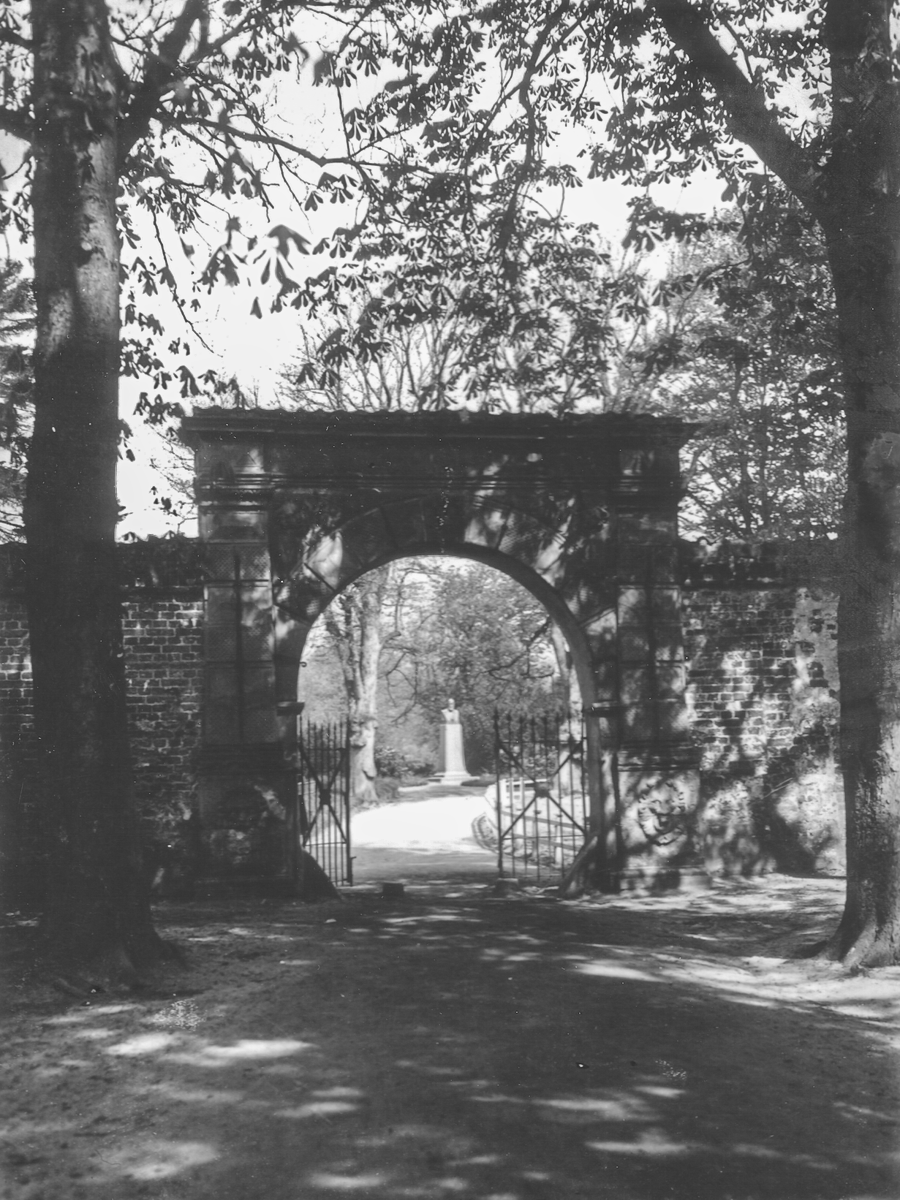Castle garden
“In our ‘Castle Garden’, which belonged to the former ducal castle and has been completely neglected since time immemorial, the hornbeam hedges, once laid out in the old French style, had grown into thin, ghostly avenues as early as my boyhood; since they still have some leaves, we here know, not spoiled by the leaves of the trees, to appreciate them in this form; and especially of us thoughtful people there will always be one or the other to be met.” This is how Theodor Storm introduces his novella Aquis submersus, first printed in 1876.
In the eastern part laid out as a tree garden, the Husum castle garden in the west north of the castle and its outer works still contained the remains of a strictly axially symmetrical system of paths, which was probably built towards the end of the 17th century based on French models.
In 1878 the city of Husum acquired the western part of the garden from the Prussian state and immediately had it remodeled according to the design principles of the “English landscape garden”. Today the entire garden area is owned by the city of Husum.
The garden is famous for its large crocus blossoms in spring. The crocus is not originally native, it is Crocus napolitanus, which was introduced, possibly from Italy, where it grows wild in the south and in Tuscany, for example. The Gottorf dukes collected foreign plants in their gardens, perhaps this is how the species found its way into the Husum palace gardens in the 17th century. The extensive expansion into a ‘Nordic flower miracle’ did not begin until the early 20th century.
On September 14, 1898, a bronze portrait bust of Theodor Storm, placed on a red granite pillar, was unveiled in the castle garden. It was created by the sculptor Adolf Brütt, born in Husum in 1855, who had a successful career in Wilhelmine Germany († 1939). The children of Storm saw a “surprising resemblence” in the bust, which was created solely from portrait photographs.
Text by Holger Borzikowsky (1947–2015)
Translation by Bjarne Albertsen



